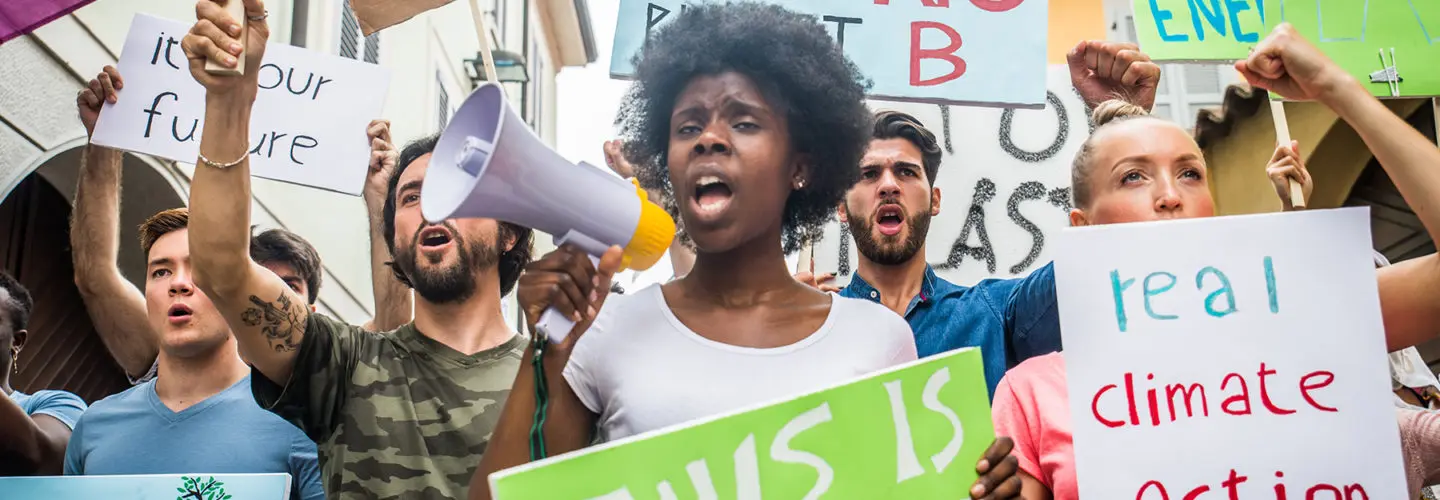Environmental Justice in an Era of Federal Rollbacks: What States Can Do
Recently, environmental injustice and energy inequity issues have gained greater mainstream attention across the U.S. This is partly due to the efforts of the Trump Administration to dismantle the recent momentum of environmental justice policy in the last few years and the longer legacy of environmental justice from decades prior. Under the Biden Administration, many significant strides were made on environmental justice policy. Some of those commitments included instituting the first White House Environmental Justice Advisory Council in 2021, revamping the White House Environmental Justice Interagency Council (IAC), and introducing Justice40—an initiative aimed at supporting disadvantaged communities by directing 40 percent of overall climate and clean energy investment by the federal government to those communities; amongst other initiatives. Today, these programs to advance environmental justice at the federal level have been halted, along with many related vital funding priorities.
When the federal administration changed on January 20, 2025, many anticipated the nation’s climate and clean energy progress would be threatened. However, the swiftness of the rollback on energy equity and environmental justice was not as widely predicted. Three successive executive orders (E.O.) have already been issued dismantling the environmental justice and energy equity progress of the Biden Administration and prior administrations, including:
- O. 14148: “Initial Rescissions of Harmful Executive Orders and Actions”
- O. 14173: “Ending Illegal Discrimination and Restoring Merit-Based Opportunity,” and
- O. 14151: “Ending Radical and Wasteful Government DEI Programs and Preferencing.”
E.O. 14148 revokes the previous administration’s E.O. 13985, “Advancing Racial Equity and Support for Underserved Communities Through the Federal Government,” and E.O. 14096, “Revitalizing Our Nation’s Commitment for Environmental Justice for All,” among other revocations. These changes abruptly stopped significant commitments that had been propelling environmental justice and energy equity leadership within federal agencies. These halted activities include several prominent environmental justice-oriented policies and programs to alleviate energy burdens, broaden access to clean energy measures, and ensure environmental justice.
These efforts to uproot environmental justice and equity are perhaps only one front among a more extensive set of issues facing the fight for a clean energy future. The single largest federal investment for climate and clean energy, the Inflation Reduction Act (IRA), passed into law by the previous administration and Congress to reduce greenhouse gas emissions and accelerate the adoption of clean energy, has also endured attacks. Many investments provided through the IRA law were initially halted via an immediate funding freeze directed by the President and advanced by the Office of Management and Budget (OMB) – but now seem to be trickling funding out following court decisions.
With mandates removed from federal agencies through multiple executive orders and downsizing, efforts to promote energy equity, environmental justice, and climate solutions rely heavily on state actions and commitments. Greenhouse gas emissions and environmental pollution issues do not cease to exist because they are not being addressed at the federal level; quite the opposite. A lack of federal leadership may slow progress, but states and regions must step up to the plate and commit to providing equitable and just solutions to climate and environmental justice within their jurisdiction. States can still take executive action and strengthen legislative authority to redouble commitments to environmental justice and lower energy costs for communities facing injustice and consumers in general. As an example of where states can take action, a recent Acadia Center report in collaboration with New York’s We Act for Environmental Justice details the excess energy burdens borne by over 2 million households in New York while outlining energy affordability programs that could address those burdens. Every state could codify similar energy burden protections for low- and moderate-income (LMI) households and enact new measures to alleviate pressure from rising utility bills.
There are many ways for states to step up and fill the gaps created by federal rollbacks on energy equity and environmental justice. These include:
- Commit to equitable funding allocation to address inequities: The Justice40 initiative instituted by the Biden Administration prioritized clean energy investments funding for disadvantaged communities nationwide. States can adopt this initiative and tailor it to meet the challenges of communities faced with pollution and other barriers to clean energy provision. For instance, states can pass legislation codifying environmental justice definitions into law that adopt similar language from the Justice40 executive order and allocate resources to create databases that emulate resources states have relied on at the federal level during the past administration(s).
- Environmental Justice Leadership and Advisory Group: Though federal leadership and vision for environmental justice are now lacking, states can continue seeking and implementing effective environmental justice leadership in their agencies and across programs. Last year, Acadia Center outlined the various equity advisory boards across the Northeast states, with the main limitation of these advisory forums identified to be a lack of mandate to execute equitable climate plans. Across the agencies, each state must work to ensure that the advisory boards are not only in place but are mandated to implement their recommendations.
- Consideration of cumulative impact and underlying equity issues: Historically, environmental justice and many frontline communities are hosts to energy infrastructure, transmission, and transportation infrastructure. Considering their exposure to various sources of pollution, state agencies across the region must establish siting and permitting mandates that consider the cumulative impact of pollution on these communities while ensuring equity, engagement, and transparency in the siting of infrastructures. Mandating community benefit plans in the regulatory or policy space for extensive energy infrastructure and codifying past federal directives into law would be essential in integrating equitable guidelines in the siting and permitting process.
In the months ahead, environmental justice and climate policy can progress if states embrace the opportunity to recommit to climate, clean energy, and environmental justice. Acadia Center has long been committed to working at the local and regional levels to shape, propose, and advocate for local, state, and regional actions that will build a cleaner, healthier, and more just economic future for all.



















